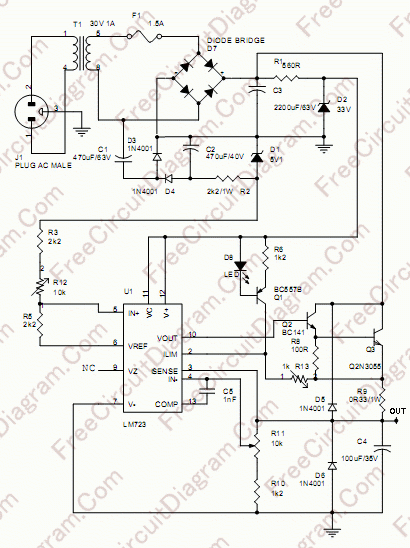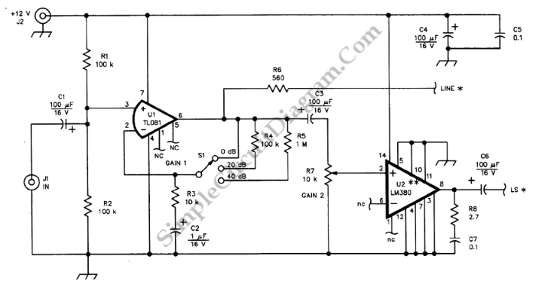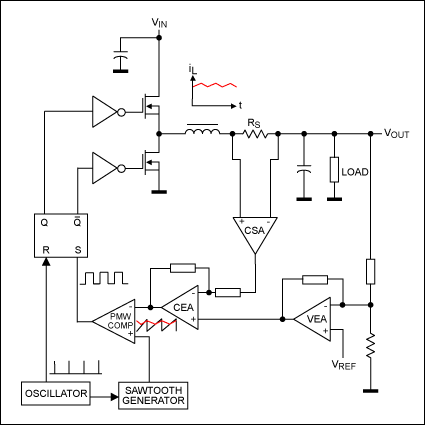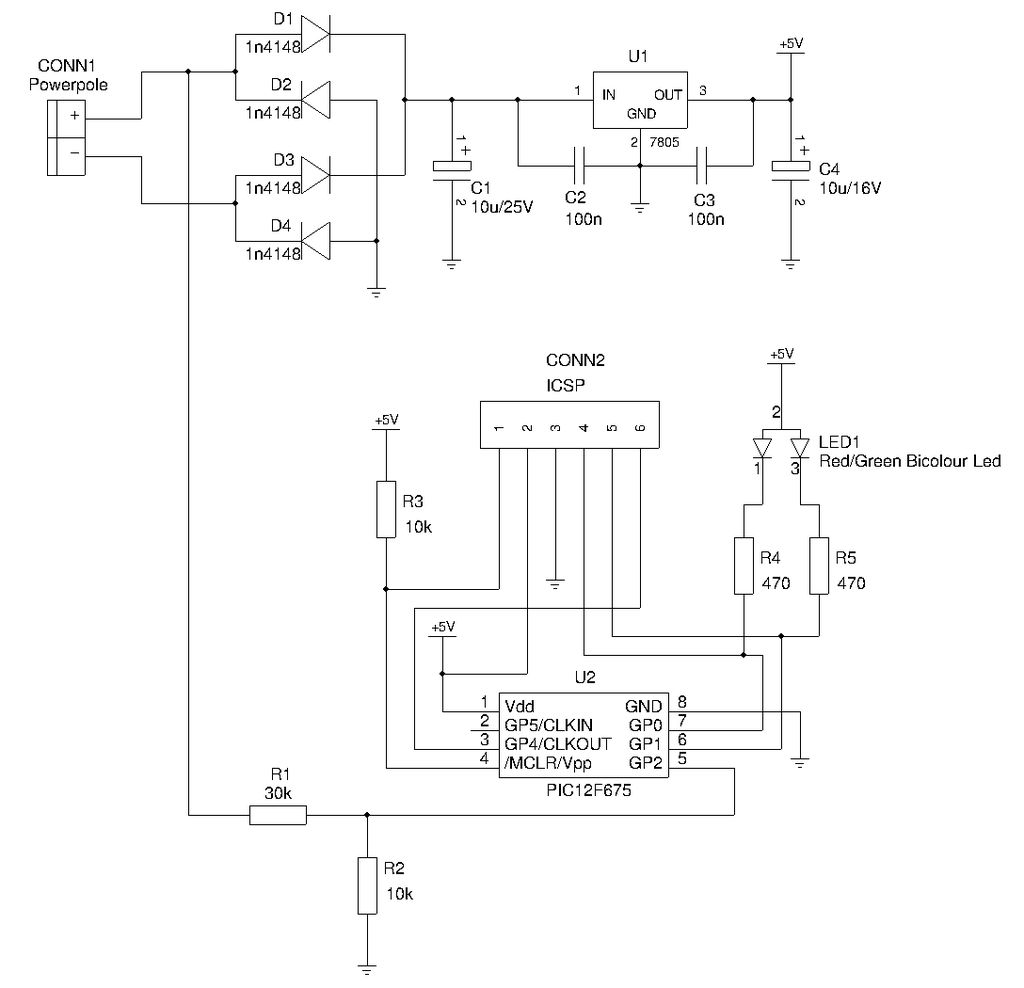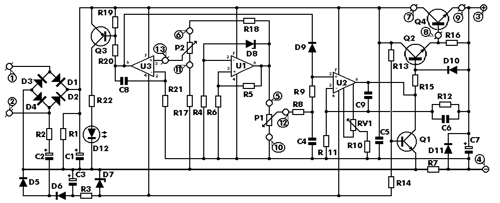
Universal Power Controller
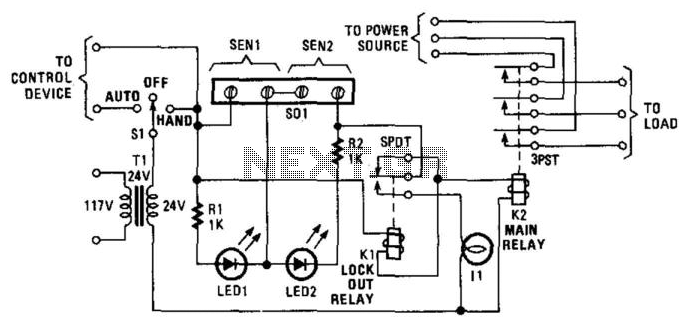
Relay K1 features a low-impedance coil, while Relay K2 is equipped with a high-impedance coil. When a sensor opens, current flows through the coil of K1, activating it. This action opens the contacts of K1, thereby preventing the reclosure of the sensor contact from impacting the circuit. Once the contacts of K1 are open, the current supplied to the main relay K2 is restricted by the impedance of K1. Relay K2 manages power to a load, such as an air conditioner or furnace blower.
In this circuit design, Relay K1 serves as a critical control element that isolates the sensor from the main load circuit. The low-impedance coil of K1 allows for quick activation with minimal current draw, making it efficient in responding to sensor signals. When the sensor detects a condition that requires action, it opens, and this opening allows current to flow through K1's coil. The relay activates, and its contacts change state, which in turn opens the circuit to the load managed by Relay K2.
The main relay K2, characterized by its high-impedance coil, is designed to handle larger loads, such as those required for HVAC systems. The high impedance ensures that K2 only activates when K1 is in a specific state, thus preventing unwanted activation of the load during transient conditions. The interaction between K1 and K2 is crucial; K1's contacts must open to limit the current flowing to K2, ensuring that the load is only powered under safe and appropriate conditions.
Overall, this relay configuration provides a robust solution for controlling high-power devices based on sensor inputs, enhancing both safety and efficiency in electrical systems. The design effectively prevents feedback from the load circuit, ensuring that sensor state changes do not inadvertently affect the operation of the load, thereby maintaining system stability and reliability. Relay K1 has a low-impedance coil and K2 has a high-impedance coil. When a sensor opens, current is routed throu gh the coil of Kl. K1 activates, opens its contacts, and prevents a sensor contact reclosure from affecting the circuit. When Kl contacts open, current to the main relay K2 is limited by the impedance of Kl. 2 controls power to a load (air conditioner, furnace blower, etc.). 🔗 External reference
In this circuit design, Relay K1 serves as a critical control element that isolates the sensor from the main load circuit. The low-impedance coil of K1 allows for quick activation with minimal current draw, making it efficient in responding to sensor signals. When the sensor detects a condition that requires action, it opens, and this opening allows current to flow through K1's coil. The relay activates, and its contacts change state, which in turn opens the circuit to the load managed by Relay K2.
The main relay K2, characterized by its high-impedance coil, is designed to handle larger loads, such as those required for HVAC systems. The high impedance ensures that K2 only activates when K1 is in a specific state, thus preventing unwanted activation of the load during transient conditions. The interaction between K1 and K2 is crucial; K1's contacts must open to limit the current flowing to K2, ensuring that the load is only powered under safe and appropriate conditions.
Overall, this relay configuration provides a robust solution for controlling high-power devices based on sensor inputs, enhancing both safety and efficiency in electrical systems. The design effectively prevents feedback from the load circuit, ensuring that sensor state changes do not inadvertently affect the operation of the load, thereby maintaining system stability and reliability. Relay K1 has a low-impedance coil and K2 has a high-impedance coil. When a sensor opens, current is routed throu gh the coil of Kl. K1 activates, opens its contacts, and prevents a sensor contact reclosure from affecting the circuit. When Kl contacts open, current to the main relay K2 is limited by the impedance of Kl. 2 controls power to a load (air conditioner, furnace blower, etc.). 🔗 External reference
